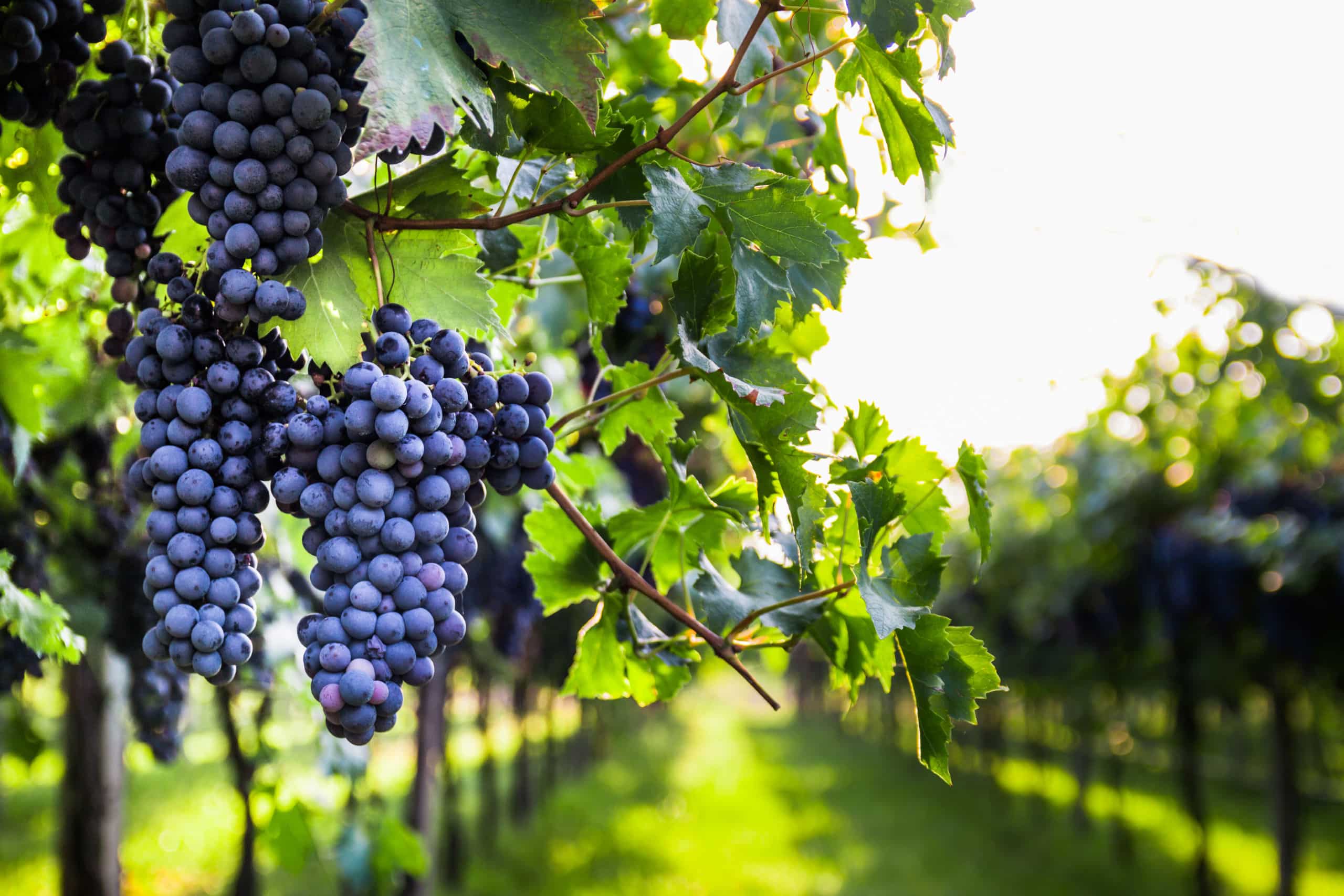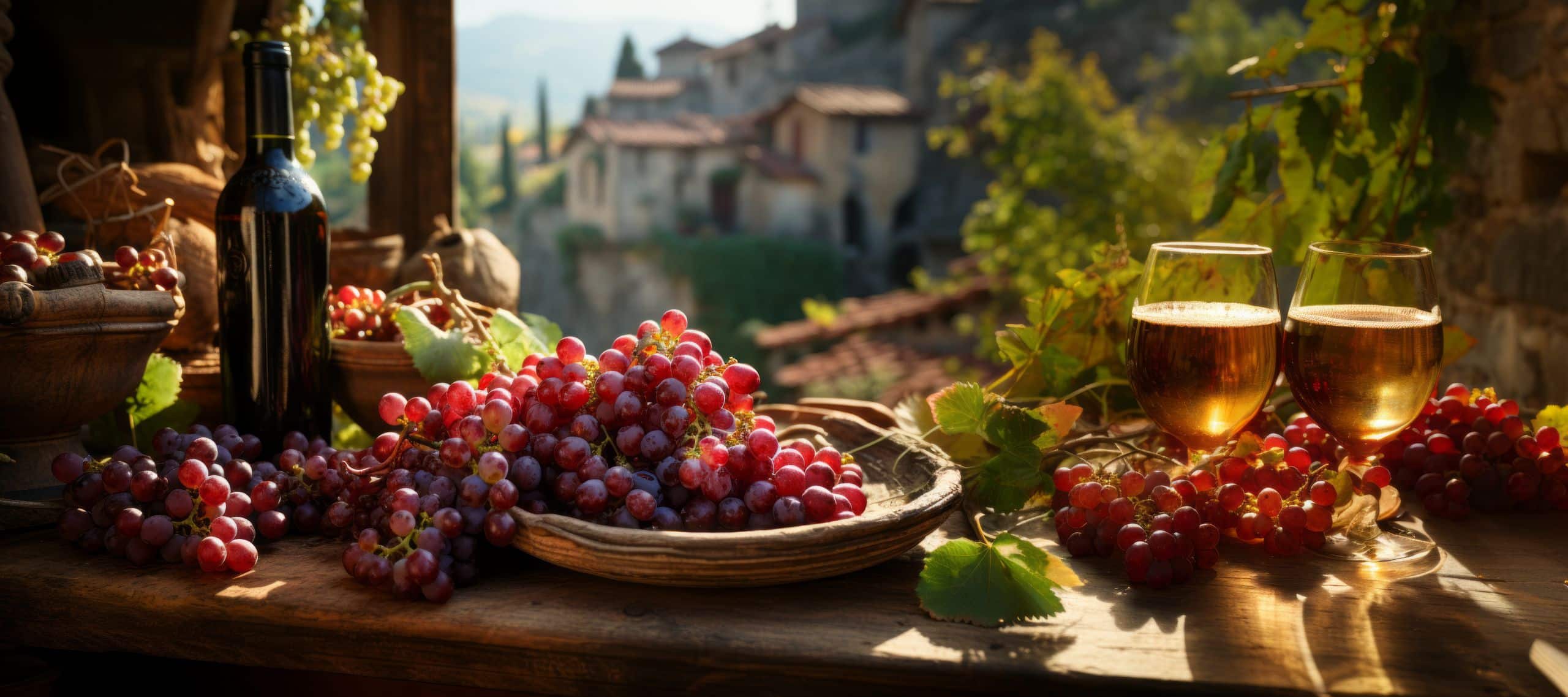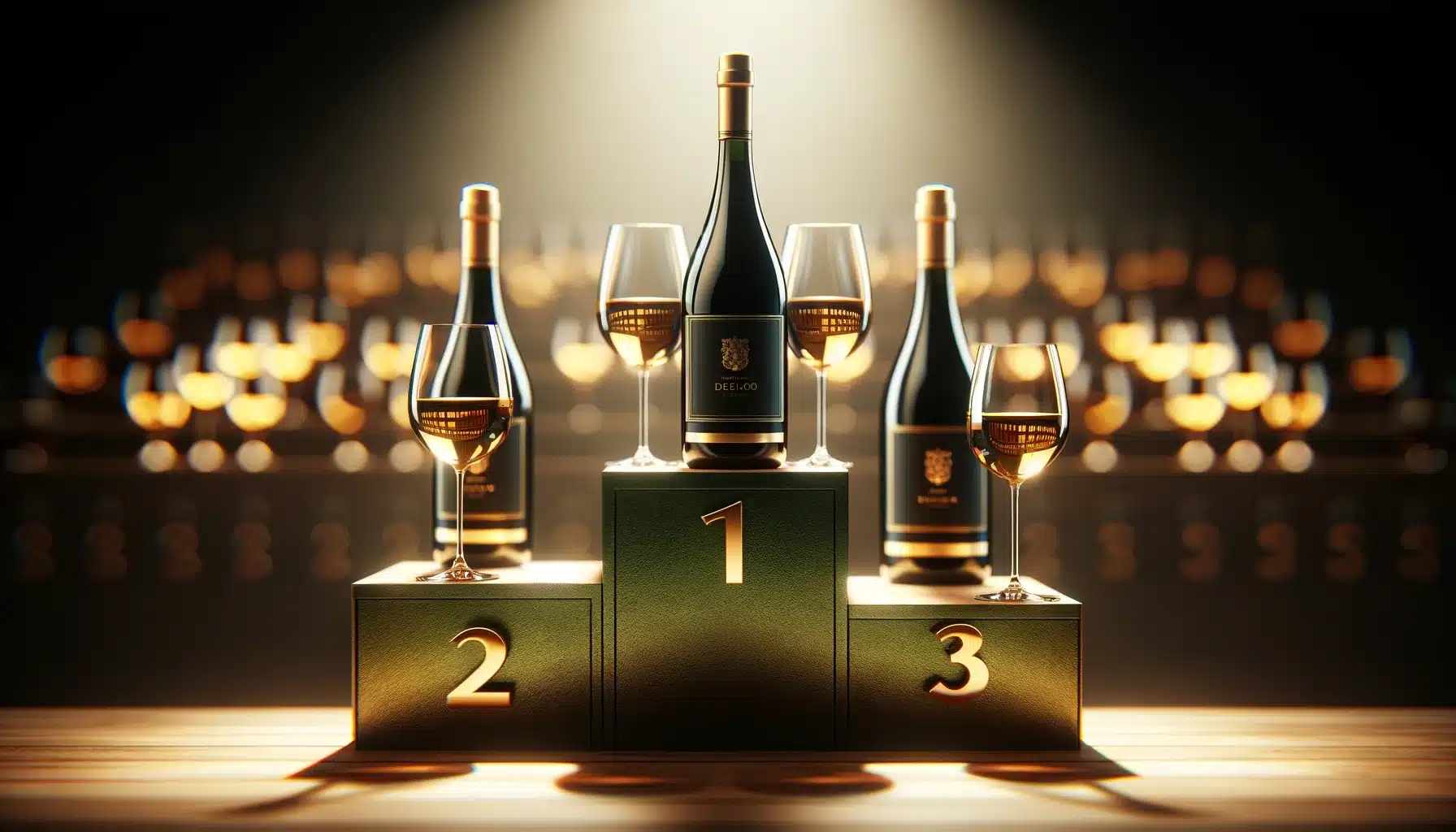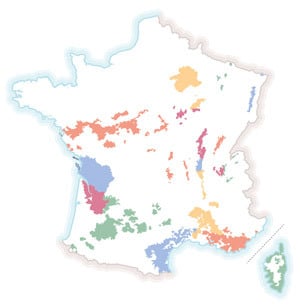
Contents
You walk into a wine cellar, scan the expanse of bottles on the shelves and you don’t understand a thing. You know Burgundy, Bordeaux, the Loire, the Rhône Valley… But when it comes to the different grape varieties, you’re lost. Don’t worry, here’s a list of 10 grape varieties you need to know to get started with wine!
Cépage Noir (red wine)
- Pinot Noir is the most widely planted red wine in the world. Burgundy’s flagship grape variety, it is also found in the Loire, Alsace and Champagne regions. It can be identified by its cherry aromas and variations with notes of prune, game, leather or undergrowth. Elegant and supple, with a hint of acidity on the finish. Its rather light color gives way to a distinctive power, finesse, intensity and aromatic complexity.
- Merlot is a typical Bordeaux grape variety, although it is now planted in southeastern France in the Languedoc region. It’s an ideal grape for blending, rounding out the rough edges of other varieties. A companion to Cabernet, it produces structured wines with aromas of ripe red fruit, or sometimes with more “jammy” aromas. With age, other aromas such as prune, violet, leather and fur appear with elegance.
- Cabernet Sauvignon is one of the world’s most famous grape varieties. This grape variety is reminiscent of the Bordeaux region, and stands out for its precociousness, which allows it to develop easily and open up more rapidly to the grand crus and crus bourgeois. Generally powerful, it blends acidity and blackcurrant aromas. Ideal with hearty dishes such as beef.
- Syrah, a prestigious wine from the northern Rhône Valley, known as shiraz in other parts of the world where it is grown (Australia, for example), is distinguished by its purplish-black color, which takes on an orange hue with age. On the nose, it develops powerful aromas of violet, blackcurrant and licorice. On the palate, finely spiced black fruits. Its personality is enhanced by the warmth of the climate where it is grown.
- Gamay is a grape variety endemic to the Beaujolais region. It is also found in the Loire region. Its fruity notes of raspberry and wild strawberry sometimes give way to spicier aromas (pepper or peony). His wines are light in color and tannin, with a slightly acidic, fresh structure. An aperitif companion, it’s not a wine for laying down.
Cépage Blanc (white wine)
- Chardonnay is a grape variety that originated in Burgundy and is now one of the most widely planted in the world. Chardonnay’s renown is due to its ease of vinification: it transforms according to soil, barrel and climate, producing unique wines every time. It produces straight, acidic, round wines, and can be made into dry, sparkling or sweet wines. Its aromas are varied, complex and straightforward, combining dried fruit, hazelnut, toasted almond and exotic fruit.
- Sauvignon is planted in France’s southwest, Loire and central regions. Subject to great diversification, it can be found in very aromatic dry white wines, lively and well-balanced in their youth, or in smoother wines balancing aroma and nervousness. It develops floral notes and delicate citrus aromas. Grown on limestone soils, it has a lovely mineral, fresh taste on the palate.
- Grenache Blanc was imported to France in the Middle Ages, and is now found in southern regions. It is identified by its aromas of fennel, dill, melon and white nectarine. This wine is not cellared, but shows great potential for sugar intake. However, it can also be found in dry white wines or as a great vin doux naturel. Full-bodied and long on the palate, it sometimes lacks acidity.
- Chenin is native to the banks of the Loire. It stands out for its mineral touches of chalk and flint. But it’s also gentle, with aromas of pear, quince and acacia honey, and spicy notes that lift the finish. Its acidity allows it to be used to make rather lively wines, although it is also very malleable and can be used to make dry, sparkling and sweet white wines.
- Savagnin is a wine that originated in the Italian Tyrol and is widely grown in Franche-Comté. Its full-bodied aromas of walnut, hazelnut, flowers, honey and green apple make it an emblematic Jura wine. It is used in the vinification of dry white wines, vin jaune, vin de paille and crémant du Jura. Characteristic, it is disease-resistant, complex, powerful and has good ageing potential.
#Bordeaux#Burgundy#Cabernet -Sauvignon#Good to know#Grape varieties#Loire Valley#Merlot#Pinot-Noir#Syrah#Vallée-du-Rhône
Array
10 € offerts sur votre première commande !
Achetez vos vins en vente privée sur Twil. Inscrivez-vous gratuitement à la newsletter pour être informés en avant-première.




